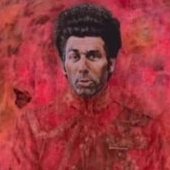How an American Journalist Saved a Renegade Jungle Army in Cambodia
-
Recently Browsing 0 members
- No registered users viewing this page.
-
Topics
-
-
Popular Contributors
-
-
Latest posts...
-
76
An Operating Manual for Understanding the Thai Mind
Most, but not all, judging from my personal experience. HVAC guys are not all geniuses, for sure. Just my very humble opinion. -
59
Big C now cheaper than expat shops
Is this petite marmite also popular with the Mennonites? -
10,068
Electric Vehicles in Thailand
BYD Seal 5 DM-i Plug-in Hybrid BYD Seal 5 official price (assembled in Thailand) Seal 5 DM-i Standard Seal 5 DM-i Premium 699,900 baht* * Special Early Bird price 699,900 baht from full price 769,900 baht today - 30 September 2025 Vehicle warranty for 6 years or 150,000 km. High Voltage battery warranty for 8 years or 160,000 km. Cell Battery Battery Warranty for 10 years 24-hour emergency assistance service for 8 years Free 1 year first class insurance Free XUV MAX II ceramic film Interest rate 1.98% for 48 months https://autolifethailand.tv/official-price-byd-seal-5-dmi-plug-in-hybrid/? -
56
You thought you had seen all from the leader in chief of the US?
The main brands are Nehaus, Leonidas, Godiva, Mary, Wittamer, Pierre Marcolini, Galler and so many others. the Swiss don't even come close to the heels of the Belgian chocolatiers -
55
EU Spanish Shock: Muslim Festivals Banned from Public Places!
There has never been a country called Palestine, and never will be unless they rename somewhere else- 1
-

-
55
EU Spanish Shock: Muslim Festivals Banned from Public Places!
They hate Spain for throwing them out of so called andalus, it was not a golden age it was pogroms, discrimination and the jizya tax for non believers. They see as their greatest defeats against Islamic expansion as the expulsion from Spain, and the invading Ottoman defeat at Vienna in 1683. The twin Towers attack in 2001 was chosen to coincide with that defeat as near as possible. Islam was, and remains the enemy of the west and all other religions.
-
-
Popular in The Pub




.thumb.jpg.a649cacedeeccbc218adc073bf668ef2.jpg)



(1).thumb.jpg.2a9a5717e089998d9b4fa1ecc5d60fed.jpg)
Recommended Posts
Create an account or sign in to comment
You need to be a member in order to leave a comment
Create an account
Sign up for a new account in our community. It's easy!
Register a new accountSign in
Already have an account? Sign in here.
Sign In Now